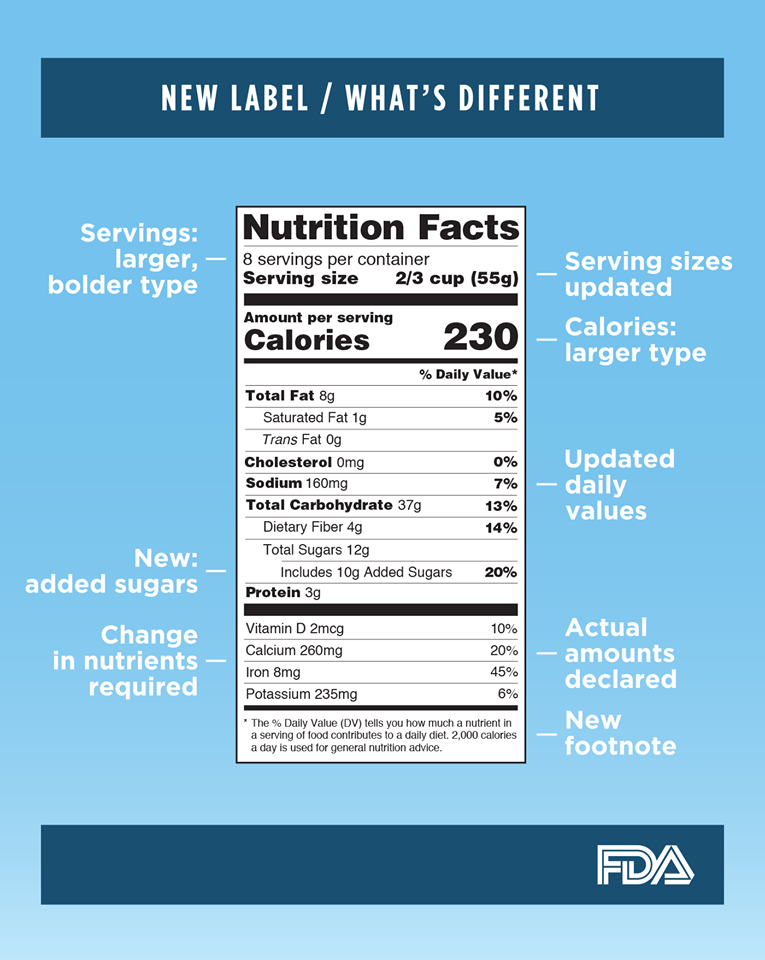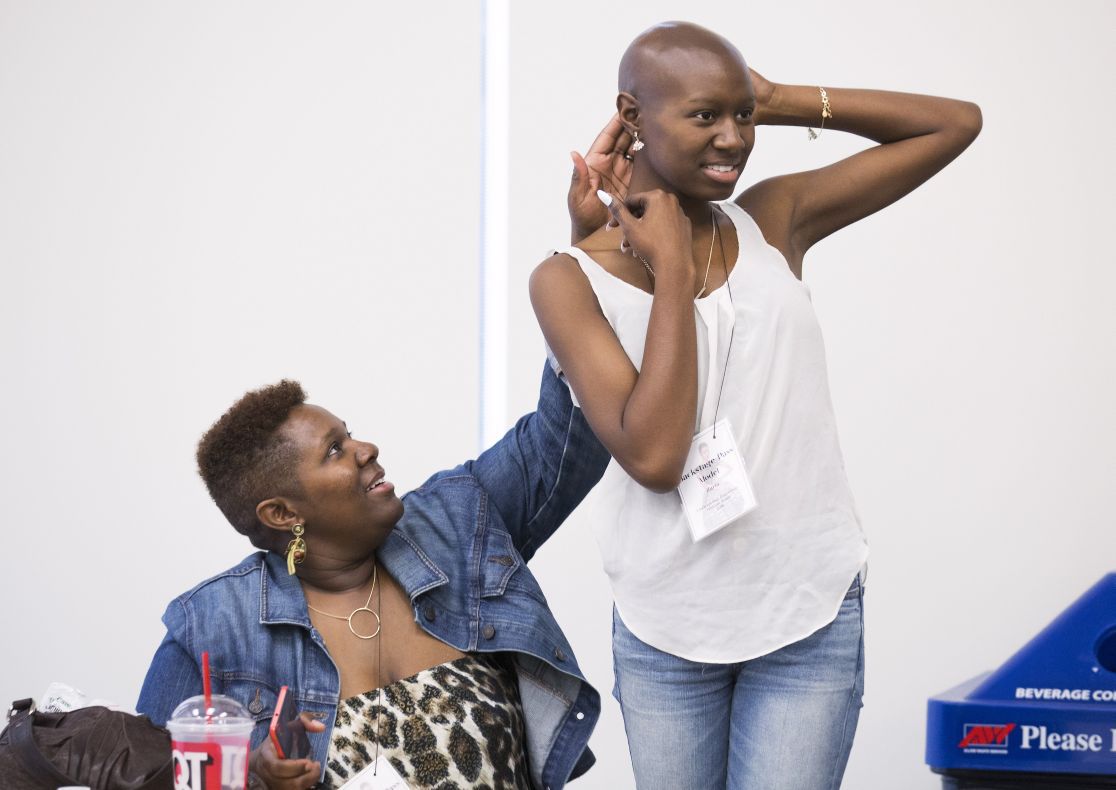.jpg)
.jpg)
日期: 2016年6月3日

點解我廿二歲就有CANCER??
點解我咁靚女要甩頭髪??
唔好話有Cancer,喺塊面生咗粒瘡你都會不停問點解嘅?點解嘅?點解嘅?
醫生你唔係諗住一句基因異變就可以打發我走呀?你唔係諗住話原因有好多,我就可以安息呀?
事實係…一日入面,呀醫生要面對幾十個相同嘅case!對佢黎講已經習慣咗個個都天崩地裂咁。佢可以做嘅係同你講:你好好接受治療啦,我地會盡力幫你!
其實呢啲時間可以做倒嘅係俾自己靜下…
其實…It's okay to be not okay!

<你有病就睇醫生>
斷估你咳下唔會覺得自己有Cancer掛?
(如果會…我諗你太大壓力,都係睇醫生穩陣!)
我唔係要嚇大家!不過老實講,我最主要徵狀係咳。其他嘅徵狀唔用心加以留意,只會當係感冒影響。
事源係2013年6月尾,我本住天不怕地不怕嘅精神跟學校Study Tour去東京。回港後就隨即投入Intern 嘅Office 工作。
唔係講笑!番咗幾日工,啲同事個個輪住病,個個都咳到肺癆咁款。(我相信絕對唔係我邪住佢地呀下!)
幾日後,我係不負眾望地加入咗【咳到痴肺大家庭】。其實我都醒!咳咗幾日,加上“覺得”咳到心口有啲痛就即刻狗衝去睇醫生,話俾醫生知你地班人傳染我!
呀醫生:「你可能咳得太勁所以拉親啲肌肉姐!開啲止痛藥俾你啦。」
如是者之後覆診都得到相同回覆····· (其實又唔怪得呀醫生咁老定,鬼估倒彤姐你廢到咁咩!)個多月後,一次照鏡嘅時間竟然發現左邊鎖骨被心口腫脹的肌肉遮住。「我個性感鎖骨去咗邊呀?媽呀…」於是淆底嘅我就超級心緒不寧地去搵一個勁嘅醫生睇睇啦!(所謂勁,即係收得貴啲囉)
講解下我當時已經有嘅徵狀先:
1. 咳咳咳
2. 消失的鎖骨
3. 心口痛&背痛(唔能夠打側壓住左邊訓)
4. 一次訓覺出大汗
拿!人家收得貴係有原因!勁醫生摸摸我條頸後,就命令我即刻去照肺。下圖就係我當時照X-ray嘅底片。望望右邊(即我嘅左肺),見唔見倒有個橙?好記得當時我同友人拎呢張 X-ray片時,低能無腦嘅我地係指住個“橙”笑左好耐,因為我地以為係心臟又le又lo…其實惡夢已經漸漸走近身邊,但兩個傻仔仍然笑得好開心!
之後發生咩事呢??下回再分解…
P·S· 呢個橙足足有15-16cm! 其實我都唔明解,有個橙喺心口我都可以唔知…真叻豬!
彤姐話你知 : Cancer 咋嘛駛乜驚呀!
美國食品藥物管理局 ( FDA ) 於 20/5/2016 頒布包裝食品新的營養成分標籤,以反映最新的科學信息,包括飲食和慢性疾病,如肥胖和心臟疾病之間的聯繫。新標籤將使它更容易為消費者做出更好的食物選擇。

美國17歲模特兒 Zaria McDonald 不幸患上癌症,要接受一連串治療,引致頭髮全部脫落,美麗不如前.
但她並沒有氣餒,在當地大學舉辦的時裝設計展上再度上天橋行Catwalk。雖然光著頭,但她一點也沒有怯場, 風采依然.

Zaria 於2015年10月發現膝部長出滑膜細胞肉瘤,經診斷後證實是癌症,2016年1月動手術並接受化療。她最近接到通知,說移除腫瘤手術成功,體內已沒有癌細胞。
Within a month, Zaria McDonald, 17, had surgery, started chemotherapy, signed with a modeling agency and appeared on the cover of a magazine.
The teen’s diagnosis with a rare form of cancer came as a devastating shock but also vindication.

McDonald had been complaining about an ache in her right knee since she was 7. Last year, a curious lump developed there, and her aches could no longer be explained as “growing pains.”
She was diagnosed with an extremely aggressive form of cancer. Since then, her life has become as unpredictable and exhilarating as a roller-coaster.
Now bald, McDonald recently became a social media sensation by embracing a “no hair, don’t care” attitude. Images of her going to prom April 23 in a St. Louis designer’s gown went viral.
If the high school senior, who graduates May 24, is overwhelmed or frustrated by the attention, the belated cancer diagnosis or her future, she doesn’t show it.
“I knew it wasn’t just your typical growing pains; growing pains shouldn’t last for years, but that’s what they said,” McDonald explained. “I didn’t want to argue with the doctors about it and make a big deal. I know you can’t test for everything.”

Growing pains was a plausible explanation for what she had been feeling. She’d always been tall for her age. She started modeling for Lillian Jones’ Laha children’s clothing line when she was 14, but felt uncomfortable standing head and shoulders above her counterparts.
At 5-foot-8 and the age of 15, she modeled adult clothing at the first Missouri Style Week in 2013.
“There was something special about her,” said Cillah Hall, co-founder of Missouri Style Week. “She was so confident and beautiful. It was something that came from deep inside.”
Style Week was where McDonald impressed Gail Lasater of West Model and Talent Management. Lasater wanted to add her to the agency’s model roster but needed McDonald to grow another inch. By October 2015, McDonald was 5-foot-9.
All that growing, and hours of daily dance classes at Grand Center Arts Academy seemed like plausible explanations for McDonald’s knee swelling. But doctors eventually diagnosed a synovial sarcoma tumor.
They concluded that it had probably been there all along. No one knows why. The malignant soft tissue cancer affects fewer than three people in a million.
“All I thought about was ‘what does it mean for cancer to be aggressive?’ How aggressive?” McDonald recalled.
But she didn’t want to think the worst, so she didn’t.
Instead, she prepared for a party. The next day was her school’s homecoming dance.
“It was kind of a bummer,” McDonald said, but she knew that she would feel worse if she didn’t go.
She wore a dress designed by Barbara Bultman, whom she met at Missouri Style Week. The St. Louis designer created a minimalist gown that was sleeveless, backless and deep burgundy. McDonald wore her hair in long cascading curls extending to the small of her back.
Within a month, she’d lose all of her hair.
That same month, McDonald appeared on the cover of Gazelle STL Magazine, founded by Hall. It was an eerie coincidence that the October issue was dedicated to breast cancer awareness and included articles on various types of cancer, early detection and survivors.
“I got chills when we found out a few weeks later that Zaria had cancer,” Hall said. “But I knew right away that she would be impactful. And she is. She carries herself with such dignity. There’s no way that she’s not destined for greatness.”
McDonald is already a muse to designer Nasheli Juliana Ortiz Gonzalez. McDonald modeled her look in a St. Louis Fashion Week art-inspired design competition for which Gonzalez won a $5,000 grand prize.
“There’s this strong, powerful look to her. I just love her,” Gonzalez said.
Gonzalez, an assistant professor at Lindenwood University with the fashion design program, discovered McDonald in 2013 at a model audition for the school’s annual fashion show. Gonzalez was immediately charmed by the teen’s maturity. She had no idea McDonald was a sophomore in high school.
“She had such confidence and such a great walk that I put her in the collection (of a designer) who did a lingerie and swimwear line,” Gonzalez said. “I think her mother almost died when she saw her (and her mother, Kendra McDonald, confirms that she nearly did), but Zaria was great. I didn’t find out until later her age, and I felt so guilty.”
Gonzalez has hired the teen to be in every runway show she’s produced since, including the most recent Lindenwood University student fashion show May 7.
“She’s one of the few models who can go from full hair to bald and look fantastic. I mean she is even missing a (ligament) in her knee, and she still has the great walk in those high heels,” Gonzalez said. “She’s incredible.”
McDonald looks the picture of health. She said people often assume she’s bald by choice.
“Sometimes I see people staring, and I’m like, ‘Why are they staring?’ And then I remember, ‘Oh, yeah, I have no hair,’” McDonald said laughing over a meal at City Diner in Grand Center. “It’s weird, but I guess it’s a good thing. One guy walked up and said, ‘You have the perfect bald head,’ and I was like, ‘Um, thanks.’”
McDonald didn’t lose much weight from chemotherapy and remains naturally slim at 125 pounds and 5-foot-9. She finished her last chemo treatment in April, just in time for senior prom. McDonald wore a dress designed by Gonzalez.
Her sleeveless gown had a sheer illusion bodice nearly the color of her skin embellished with coffee-colored pearls and brown applique florals. The skirt was a billowing mass of chocolate tulle. She looked like someone transformed by a fairy godmother.
And just like a typical teen, she had her friends snap a few photos of her wearing the magical gown and promptly posted them to Facebook and Instagram.
Within 24 hours, tens of thousands of people shared her images with inspired messages and praise. Someone with the Twitter handle @blackgirlswinni said, “Cancer can’t stop you from slaying #prom2K16” along with a trio of smiley-faced emoticons with heart-shaped eyes. That posting attracted 32,000 likes and 21,000 shares. There was a seemingly endless ripple of shares, likes and reposts.
“It was a shock because I didn’t expect anything like that. I mean, I was just going to prom,” said McDonald, who went with a date she described as a friend. “But I’m really glad that some people found it inspirational.”
Kendra McDonald said that she’s thrilled that her daughter hasn’t missed a beat pursuing her dream to model and has maintained a high grade point average, but she’s still praying because they aren’t out of the woods yet. They have to wait until December to see if doctors clear her for surgery to replace the ligament in her knee.
“All along, I found this much harder than she did,” her mom said. “But all along, Zaria handled it like a champion, so I just followed her lead,” Kendra McDonald said. “Without her strength, I would have been in the corner somewhere bawling.”
Now they are celebrating. On April 25, the Monday after prom, McDonald was declared cancer-free. She will start college in the fall and plans to keep modeling.

藥物概述
Zytiga(abiraterone acetate)中文商品名為澤珂。然而,很多人喜歡取其諧音,稱呼它為”阿比特龍”。這是一個治療晚期轉移性攝護腺癌的口服藥物。因為澤珂可以同時抑制睪丸、腎上腺及攝護腺腫瘤三個來源的男性荷爾蒙分泌,讓男性荷爾蒙含量進一步降低,因此可以在雄性素去除療法(即荷爾蒙療法)失效後,仍能抑制腫瘤生長。 臨床研究證實,使用澤珂可以延長病患存活時間,可以減輕症狀,延緩疾病惡化,讓病人能維持在體能較佳的狀態。另外也可以延後進行化療,以及止痛藥物的使用時間或使用量,以維持日常生活功能及品質。
但是如同所有晚期癌症的新藥,它並不是根治的藥,也不是奇蹟仙丹,大部分的病人使用一段時間之後,病情就會開始惡化。澤珂平均可以延長病患存活時間約4~5個月。
服藥方式
澤珂必須空腹服用。因此建議清晨起床空腹口服4顆澤珂(共1,000 毫克),服用1小時後再用早餐。早餐及晚餐隨餐服用1顆5 mg類固醇(prednisone或prednisolone)。併用類固醇的目的,在於減緩治療造成的不良反應。應持續每日治療,請勿自行停藥。在治療期間,為持續抑制來自睪丸的男性荷爾蒙,如您過去屬於接受定期(如每個月或每3個月)的荷爾蒙針劑(GnRH)注射者,仍應持續打針。
不良反應以及處理方式
可能發生的副作用,包括周邊水腫,低血鉀,高血壓,肝指數上升,與心血管功能影響。在使用澤珂治療之前與期間,應使高血壓獲得控制,並矯正低血鉀的問題。對有心血管疾病病史的患者,使用澤珂時應謹慎,應至少每月監測一次。另外,也應先檢測肝功能的ALT與AST及膽紅素,並於治療期間,固定接受檢測肝功能。若在接受澤珂治療的過程中發生任何上述的、或不包含於上述的副作用,請立即告知您的醫療人員,因為這些不適症狀,可能與藥物副作用或疾病本身具關聯性,應與醫師充分討論。
www.tmua.org.tw/ptEdu-ZYTIGA.html
注意:此藥物受香港《藥劑業及毒藥條例》監管;病人須憑醫生處方,到已註冊藥房購買。
資料來源 : 香港藥劑師學會
學名: Doxoubicin hydrochloride ( Adriamycin ) 多柔比星
商品牌子名: Adriamycin
劑型:針劑:10mg/5ml; 50mg/25ml
孕婦用藥分級: D
藥理: 經與DNA結合和抑制topoisomerase II,從而阻止腫瘤細胞的分裂繁殖。
用途: 軟組織及骨肉瘤*;霍奇金氏淋巴瘤*、非霍奇金氏淋巴瘤*;急性淋巴性白血病*、急性骨髓性白血病#;乳癌*、卵巢癌#、胃癌*、膀胱癌*、甲狀腺癌#;小細胞肺癌*;神經母細胞瘤#;維爾姆斯瘤#、子宮頸癌、多發性骨髓瘤。
劑量: 靜脈注射; 60mg/m2,每隔三週一次。
用藥禁忌: 有心臟功能受損或阻塞性黃疸的人士忌用。
用藥注意: 有肝或腎功能受損、或曾患有遺傳性過敏皮膚炎的人士要小心使用。
副作用:
(1) 常見副作用: 口腔炎、嚴重骨髓抑制、脫髮。
(2) 其他副作用: 急性過敏反應、心律不正、白血球減少,增加感染機會。
藥物相互作用: Phenobarbital會降低Doxorubicin的藥效,可能需要增加Doxorubicin的劑量。
病患者及家屬注意事項:
– 用藥期間可能會引致脫髮,但停藥後2-3個月,毛髮會再度恢復生長。切勿用力梳刷頭髮,可使用柔軟的嬰兒頭刷。
– 在服藥後尿液可能會變成紅色。
– 若有噁心不適,應告知醫生,醫生會處方紓緩症狀的藥物。
醫管局藥物分類:通用藥物
藥物分類::抗生素(此藥為醫生處方藥物,須由藥劑師核實處方後配藥)
(1) * 為FDA和HA的應可適應症
(2) # 為FDA的應可適應症
(3) 沒有標記的為HA的應可適應症
癌症是嚴重威脅人類健康和生命的重大疑難疾病,目前已成為人類致死的第一或第二位的原因。因為對其發生、發展變化的規律仍有許多未知數,治療效果也不如人意。因此,仍有不少人「聞癌色變」!
目前,對癌症的治療強調的是綜合治療,即多種治療方法相結合(包括西醫的、中醫的和其他一些替代醫學的方法),針對病種和患者自身的因素(體質、對藥物的耐受性及敏感性等)儘量做到個體化治療,在治療癌症的同時保證患者的生存質量 。
除手術和標靶治療之外,放療和化療是目前西醫治療癌症的兩種最主要的方法。但是,放、化療在殺滅癌細胞的同時對人體正常組織也有不可忽視的毒副作用。
放療的毒副作用根據放療的部位不同而有不同的反應,常見的有(1)放射性腦組織水腫;(2)放射性局部組織纖維化(如頸部肌肉,下頜關節、肺纖維化等);(3)放射性腸炎;(4)放射性膀胱炎;(5)放射性口腔潰瘍、唾液腺損害;(6)消化道反應(噁心、嘔吐、腹痛、腹瀉或便秘);(7)骨髓抑制(血白細胞、紅細胞及血小板降低);(8)生殖系統損害;9.皮膚損害。


圖片:Getty Images
化療藥物的毒副作用主要表現在兩個方面:一是近期毒副反應,主要有輸注化療藥物引起的靜脈炎、胃腸道損傷、骨髓抑制、肝細胞損害、腎細胞損害、心肌細胞損害、末梢神經損害(手足麻痹)、脫髮、口腔炎、皮膚損害等;二是中、遠期毒性,主要有內分泌系統損害、不育不孕症、免疫功能抑制等。
放、化療的毒副作用都這樣一個特點:即當其劑量達到一定程度之後,療效不見得會更好,但毒性卻越來越大,以致於人體無法耐受!這在醫學上稱之為:「劑量限制性毒性」。所以在臨床實踐中,進行放療或化療在劑量上是有一定所限制的。當總的劑量或療程完成之後,無論效果如何,都不能再繼續進行。
有的病友問到:既然放、化療有這麼多的毒副作用,那麼我不做放療或化療,只做中醫治療可不可以?一般來講,對於IIB期以後的病人,無論有否手術,如果年紀尚輕,或體質尚好者, 放、化療是必要的,而且要做到足量、足療程(無法耐受者除外),因為這對殺滅殘存的癌細胞,降低復發或轉移的風險是必不可少的! 而中醫藥治療在殺滅癌細胞的強度方面並不能完全代替放療和化療。
中醫藥治療的長處在於辯證論治、整體調節、扶正固本、副作用小,可以長期應用,正好可以彌補西醫治療的不足。具體地講有以下優點:一、改善臨床症狀和生存質量,提高生存率;二、對放、化療起增效減毒的作用;三、提高外科治療效果,減少手術併發症和後遺症;四、預防腫瘤復發和轉移;五、對於無法手術及放、化療的患者,可以改善症狀、減輕痛苦、提高生存品質、延長生存時間;六、沒有骨髓抑制方面的副作用,對消化道也不會有嚴重影響;七、預防癌前病變。
在放、化療的同時即配合中醫藥治療,這樣可以盡可能地提高放、化療的治療效果,而減輕其毒副作用。舉例來講,如果一個鼻咽癌的病人,在放療一開始即配合中醫藥治療,可以最大限度地保護患者唾液腺的分泌功能,減輕口乾咽痛、口腔潰瘍等不適,使其生活質量不致受到太大影響。如果等到放療結束以後再進行中醫治療,因為放療過程中缺乏中醫藥的有效保護,放射線對唾液腺的傷害已經形成,想要再恢復就十分困難了!對於其他的癌症患者亦是如此。
有的朋友擔心中藥會增加放、化療的毒副作用,降低其治療效果,起到「增毒減效」的作用,這種情況一般不會出現,因為受過專業訓練的中醫師會根據病人的病情和西醫治療情況做出正確和適當的處理,以達到「減毒增效」的目的。
香港浸會大學中醫藥學院
臨床部高級講師郭岳峰博士
有服用 tamoxifen 的乳癌患者可能瞭解到這隻藥有機會令子宮內膜增生和輕微增加子宮內膜癌的風險。有部分病人為此十分擔憂,除了負上精神壓力之外,有時還做了一些不必要的入侵性檢查。美國 The American College of Obstetricians and Gynecologists 的一個委員會 (Committee on Gynecologic Practice) 就這個問題,根據多方面的數據進行了檢討,並在2014作出相關的建議,目的是了解風險,建議適當的醫護方向和減低服用 tamoxifen 病人進行不必要的入侵性檢查。

原文可在下面的連結看到,我亦把結論重點列出供大家參考。
1. 基於新的數據,服用10年tamoxifen 對乳癌病人可提供額外的好處。
2. 病人應該要被告知服用tamoxifen 的風險,包括子宮內膜增生、子宮內膜癌,子宮肉瘤等情況,鼓勵她們如有任何陰道異常症狀 (如出血、血腥陰道分泌物、分泌物帶有色斑點、異常白帶等) 要儘快求醫跟進。
3. 服用tamoxifen的收經婦女應密切監測有否出現子宮內膜增生或腫瘤的症狀。
4. 服用tamoxifen的未收經婦女如沒有出現一些子宮內膜癌的風險問題,除常規的婦科檢查外,無需額外監測。
5. 除非病人已被確定有高風險的子宮內膜癌,並沒有証據顯示常規的子宮內膜監測能能有效探測到早期子宮內膜癌。這些監測可能會導致更多入侵性和昂貴的檢查程序,委員會並不推薦。
6. 已收經婦女在開始接受tamoxifen治療前應進行陰道超聲波、宮腔超聲造影,甚至宮腔鏡等檢查去篩查有沒有子宮內膜息肉,從而釐定本身出現子宮內膜非典型增生的風險級別。
7. 如果病人出現子宮內膜非典型增生,應啟適當的婦科處理工作,重新評估應否繼續服用tamoxifen。如果病人有須要繼續服用tamoxifen並願意接受風險的話,病人可考慮會否切除子宮。在子宮切除後,病人可和腫瘤科醫生商討重新服用tamoxifen。
注意:此藥物受香港《藥劑業及毒藥條例》監管;病人須憑醫生處方,到已註冊藥房購買。
資料來源 : 香港藥劑師學
Ixabepilone (Ixempra®)易莎平注射劑
用途及特色
Ixabepilone 為化療藥物,用於治療比較後期或者已擴散的乳癌。通常在其他化療藥物未能達致理想療效時,才會使用 Ixabepilone。
Ixabepilone 可單獨用於治療,或與另一化療藥物 Capecitabine 配合使用。
註冊品牌名稱
Ixabepilone 並未於本港註冊。
於美國食物及藥物管理局(FDA)註冊時,其使用的品牌名稱為 Ixempra®。
劑型
Ixempra® 為注射用溶液,分別有 15 毫克和 45 毫克兩個份量。
Ixabepilone 會透過靜脈注射進入身體,每隔 3 星期需重覆一次。每次靜脈注射需時 3 小時。
以下情況忌用此藥物:
留意事項
藥物內含酒精成分,可能使人昏昏欲睡。用藥後,應避免駕駛或操作機械。
Ixabepilone 忌與西柚汁同用。
病者如對 Ixabepilone 敏感,日後進行靜脈注射前,可能需要先使用類固醇藥物。
醫生也有可能減慢靜脈注射的速度以減低過敏反應;在此情況下,注射時間或需延長。
進行 Ixabepilone 療程時,醫護人員需要定期檢查病人的肝臟功能。
藥物常見副作用
由 Ixabepilone 引致的常見副作用包括:
感覺疲累,食慾不振,輕微發熱,頭痛﹐肌肉及關節痛,噁心及嘔吐,腹瀉或便秘,腹痛
貧血或血小板數目減少
手掌及腳掌變紅(與曬傷相似);皮膚乾燥,褪皮
手指甲及腳趾甲出現改變,頭髮脫落;唇瘡、口瘡等
上列情況都是較輕微而且正常的副作用。如果情況持續或引致不便,病人可諮詢醫生的意見。
但如下列情況發生,請即聯絡醫生:
手腳感到麻木或刺痛
發燒,體溫升至 38°C (100.5°F ) 以上;同時出現發冷、咳嗽、小便灼熱或刺痛等癥狀
皮膚痕癢,出現紅疹、風疹塊,發紅、腫脹等
呼吸困難,或者胸口翳悶
與其他藥物相互作用
Ixabepilone 與不少藥物均可能產生相互作用,當中包括:
Cephalosporin 類抗生素(例如 Cefotetan),以及其他抗菌藥物如 Clarithromycin,Metronidazole,Furazolidone,Rifampicin
某些抗真菌藥物(包括 Ketoconazole,Fluconazole 等),戒酒藥 Disulfiram,及 Sulphonylurea 類降血糖藥
Barbiturates 類的鎮靜劑,以及其他精神科藥物如 Carbamazepine,Nefazodone,Trazodone
保健食品如貫葉連翹(St. John’s wort),以及其他藥物如 Delavirdine,Dexamethasone,Phenytoin,Verapamil
因此,病人在使用 Ixabepilone 前,請先讓醫生知悉你的完整病歷,以及現正服用的藥物;購買其他藥物及保健食品前,亦請先諮詢醫生或藥劑師的意見。
更多資訊
延申閱讀 :
香港科研製藥聯會
http://www.hkapi.hk/search_page_chi.asp